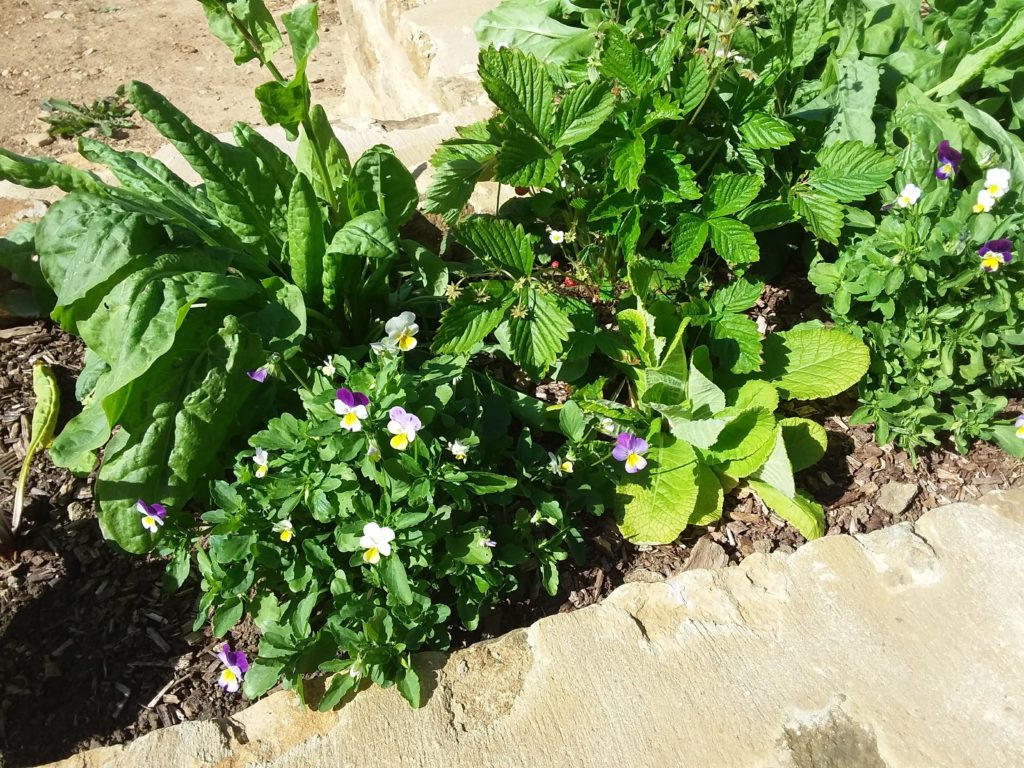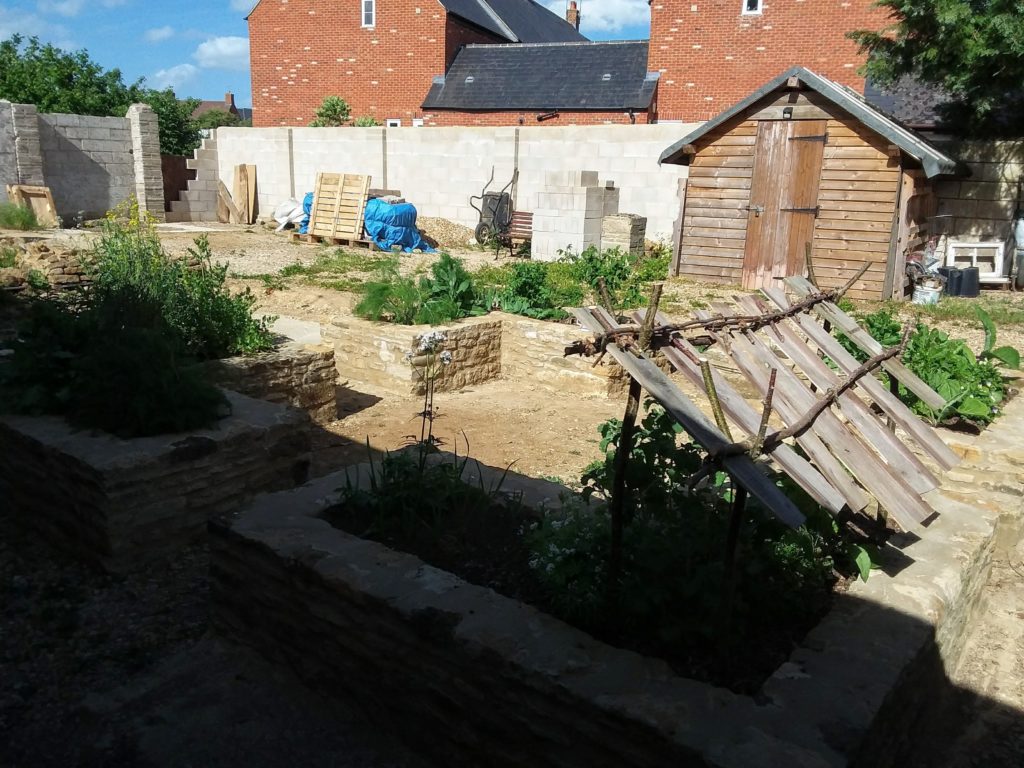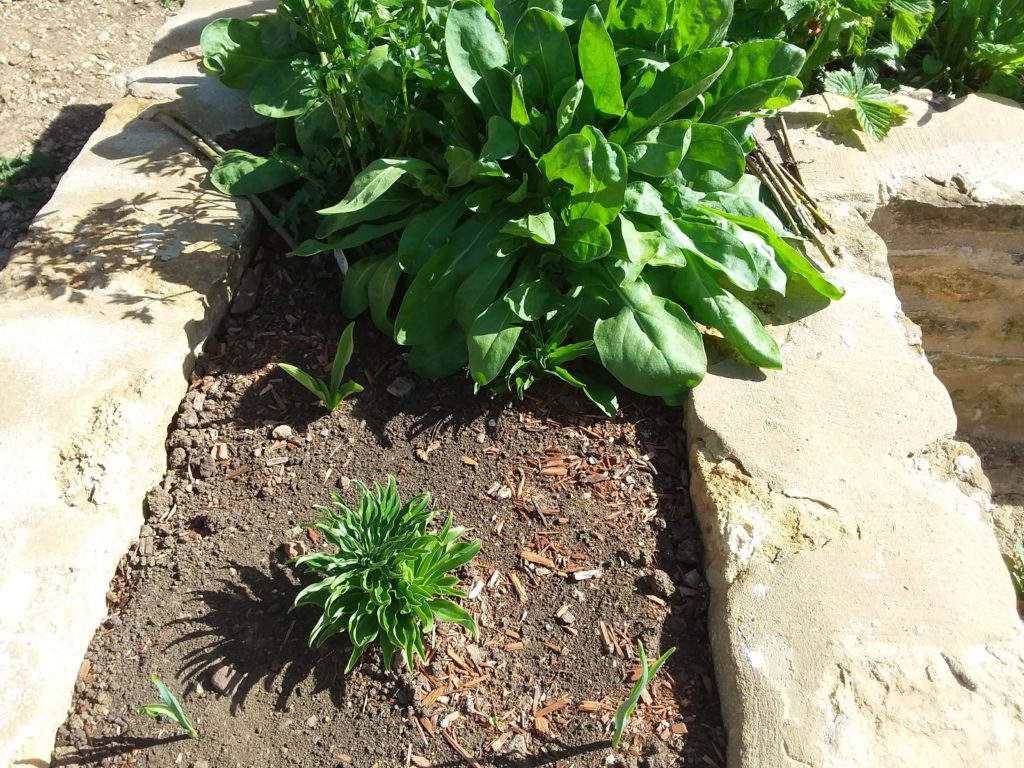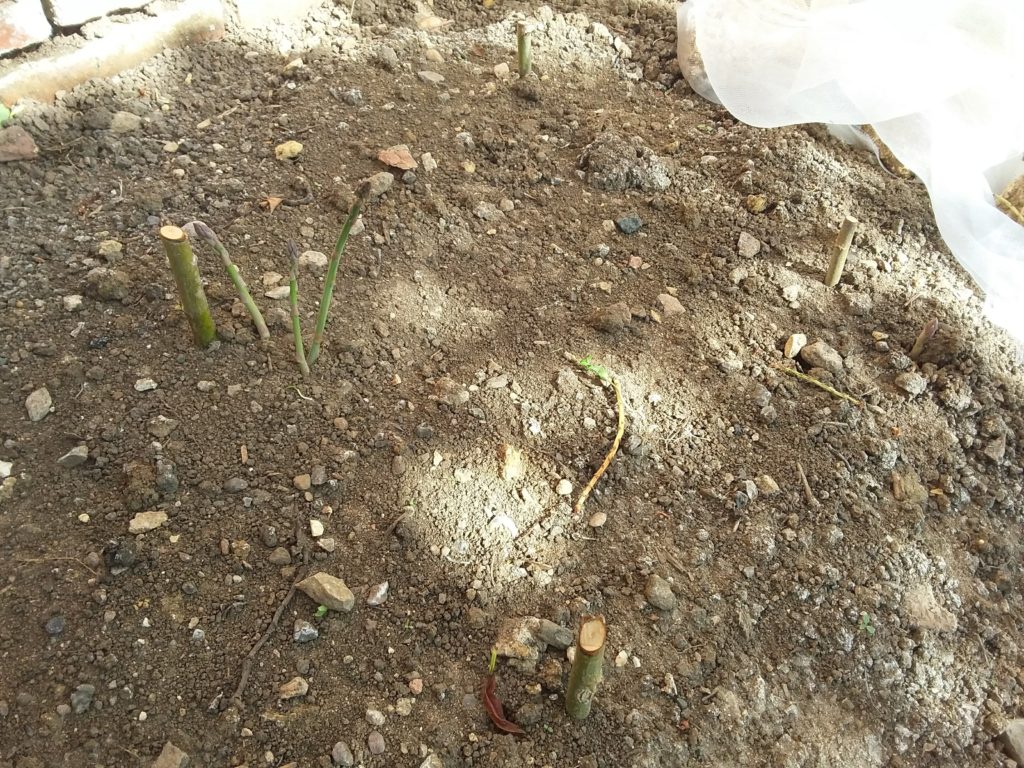The heartsease are flowering, they look great! The viola tricolor is the wild progenitor of the cultivated pansy. There is alas no secure identification of heartsease in Anglo-Saxon literature, but it’s a lovely native wild flower with a history of medicinal use, so it’s probably reasonable to include it.

The main Rumwoldstow garden is really starting to fill out – I can see that next year I may need to remove some plants, or find them other homes – the oregano for example is disappearing under the opium poppy, even though it’s doing pretty well in itself.


The asparagus plants in the Bed of Brother Julian are starting to come up. Subsequent to this photo, I’ve scattered sheep droppings around them and then layered lawn cuttings on top, with a sprinkling of soil at the end. T’internet tells me that sheep droppings are great for asparagus but that they may burn the plants. As these were fairly dry I hope they will be OK, and have tried to keep them from touching the actual plants. Fingers crossed!

Asparagus is another questionable plant. It was definitely used medicinally, and it’s hard to see why the Anglo-Saxons wouldn’t have eaten the tasty shoots, but we don’t have firm evidence of this. It may be that the earlier varieties weren’t so good to eat.